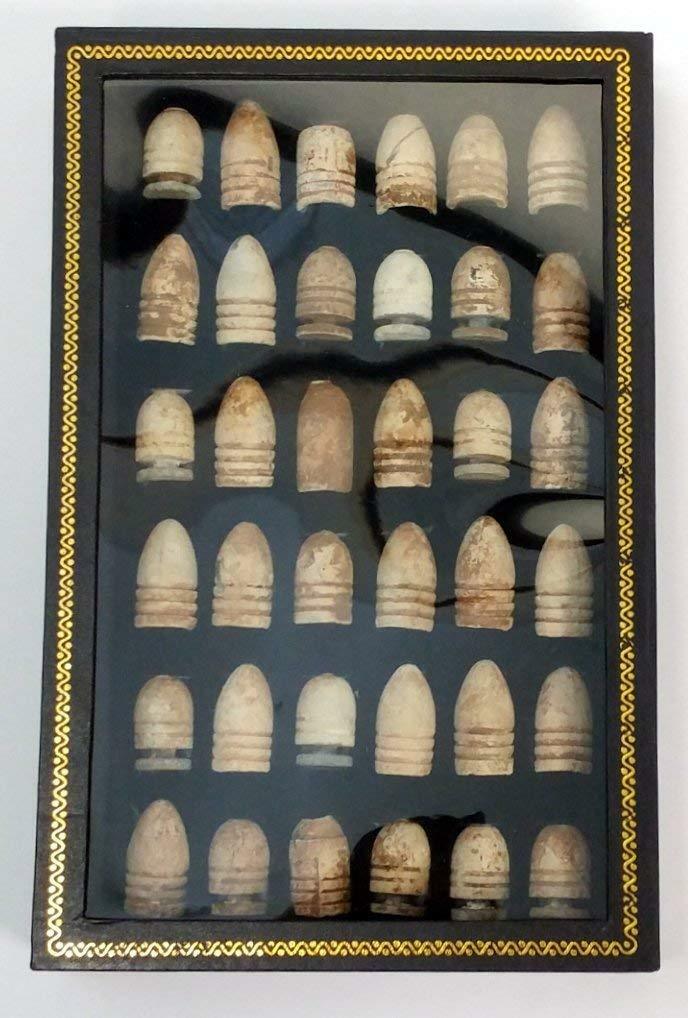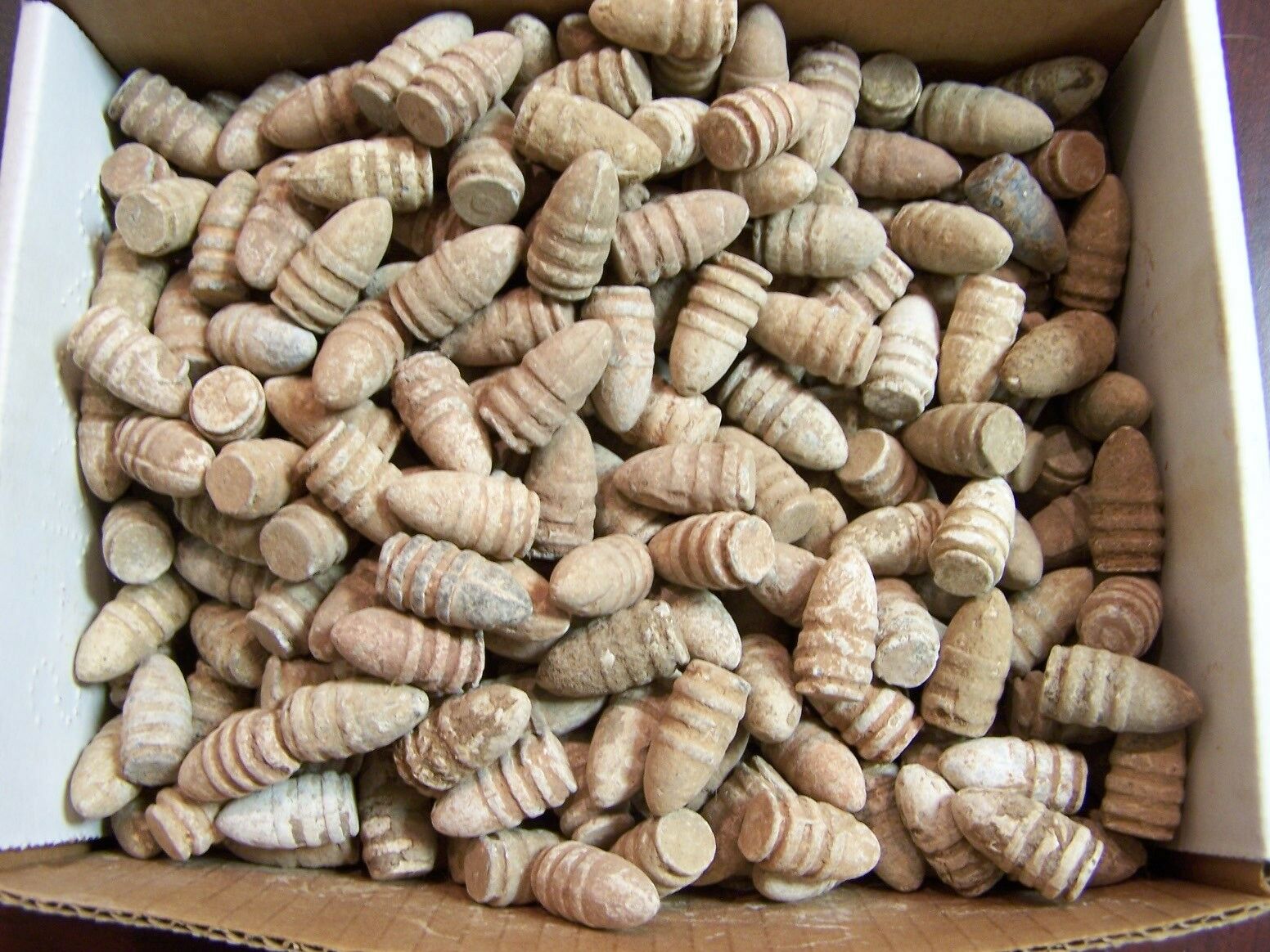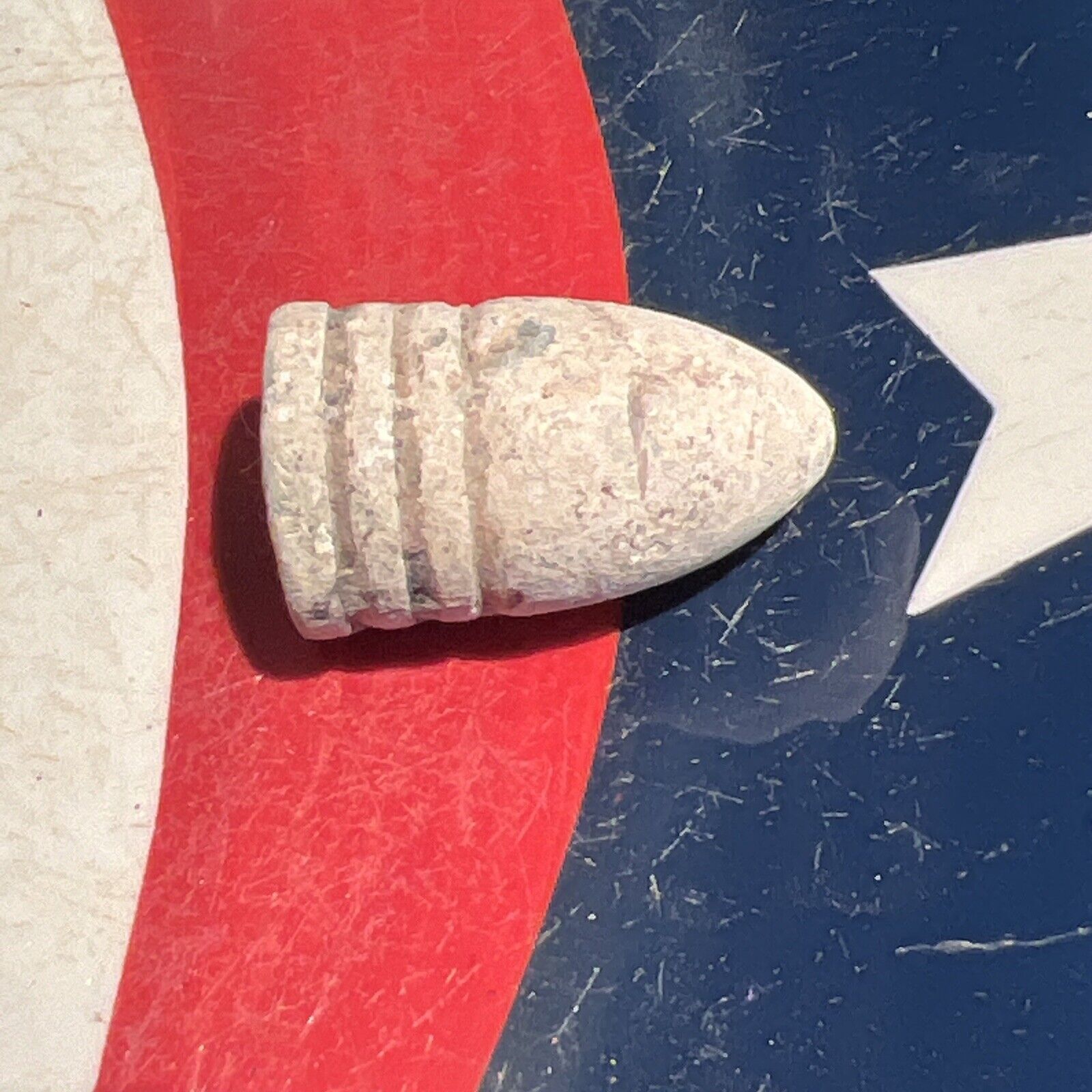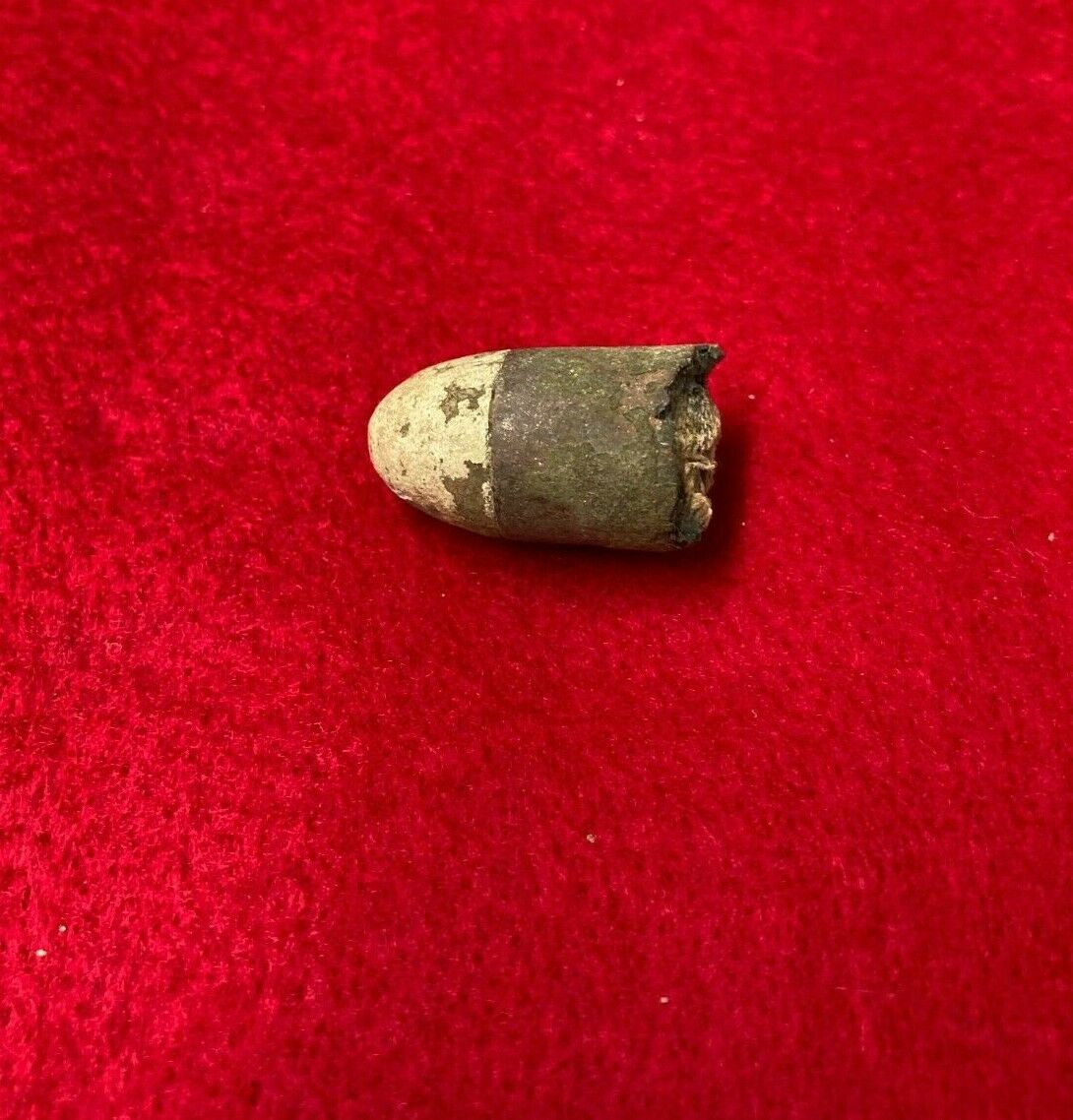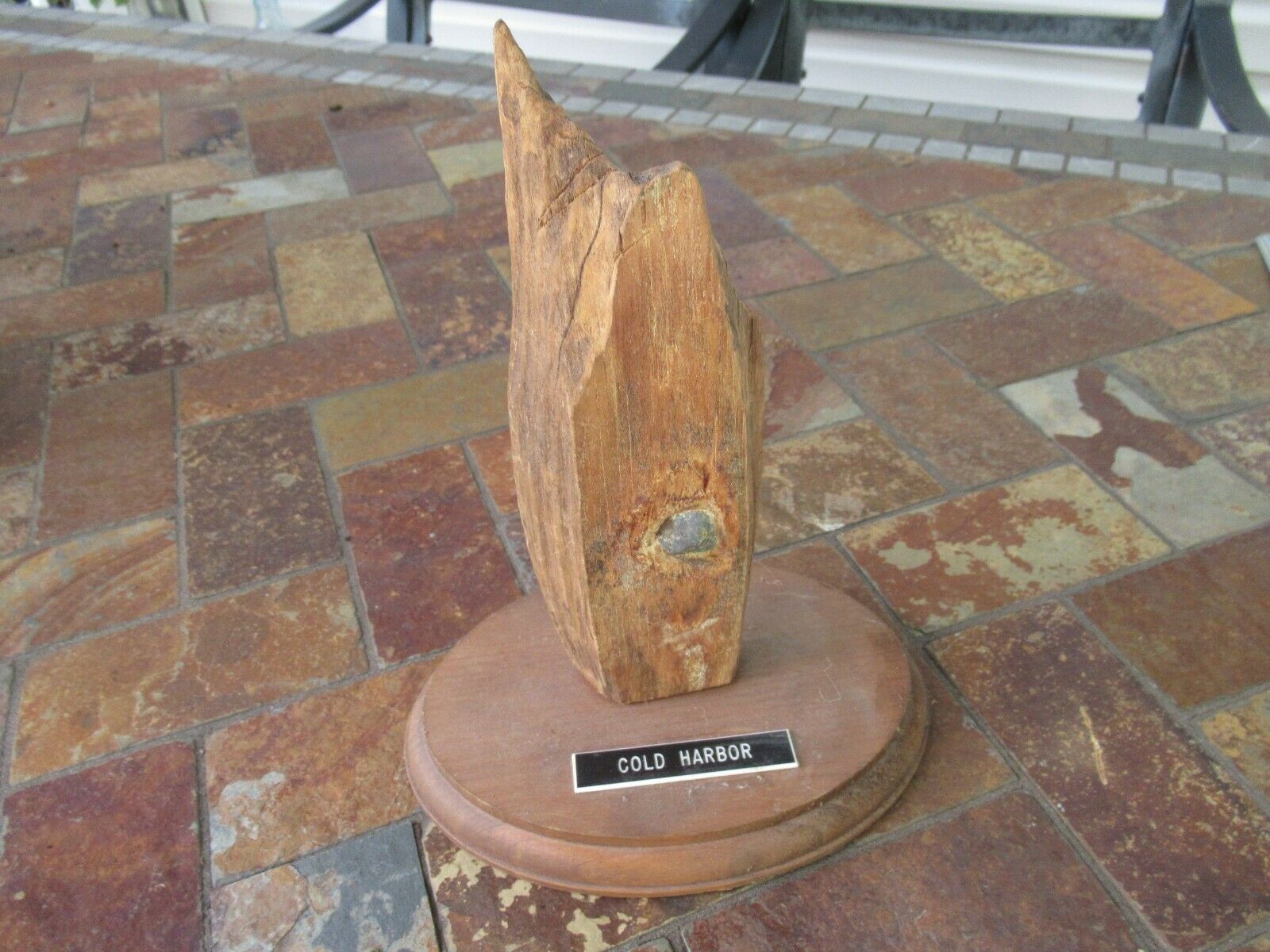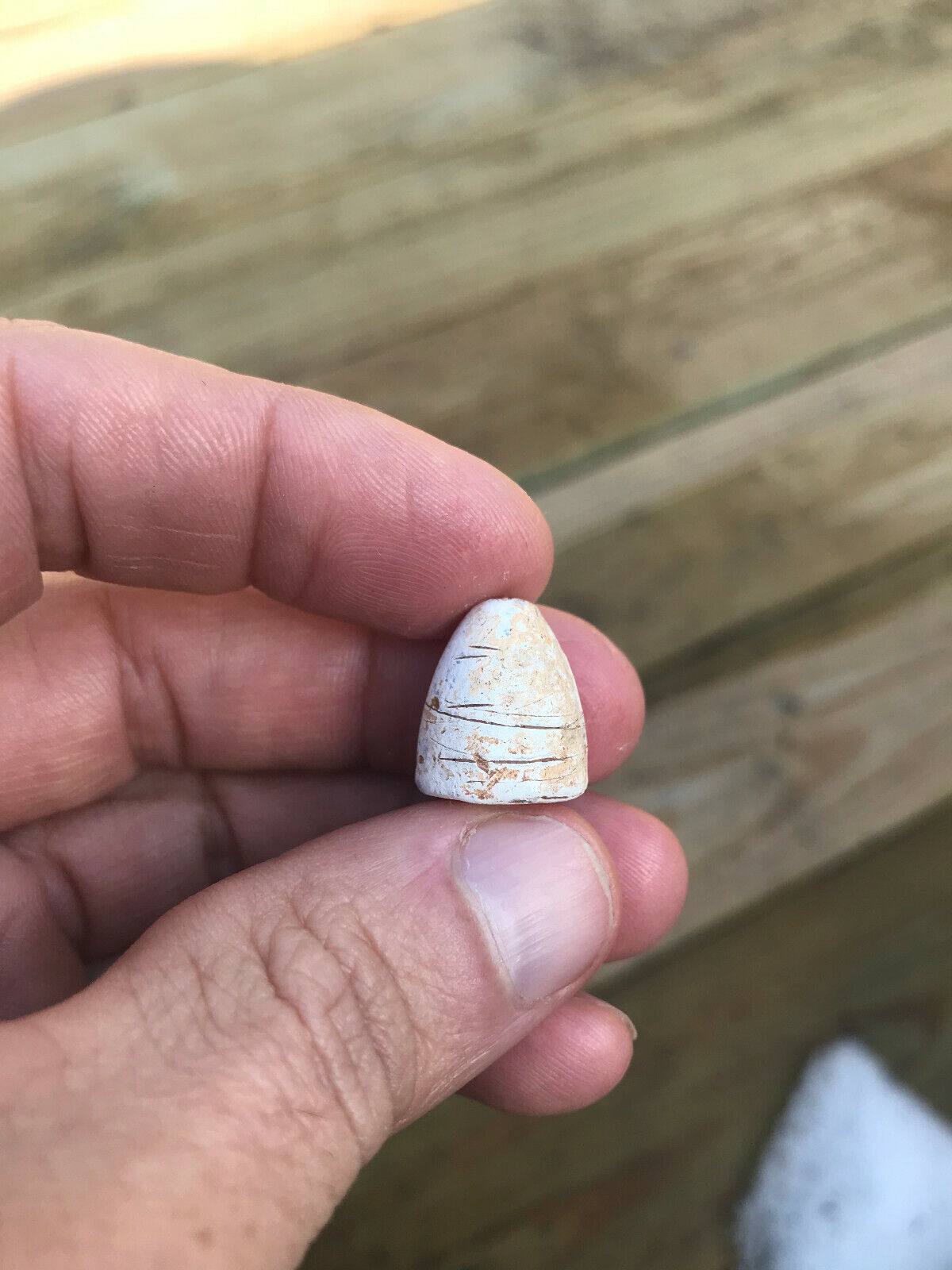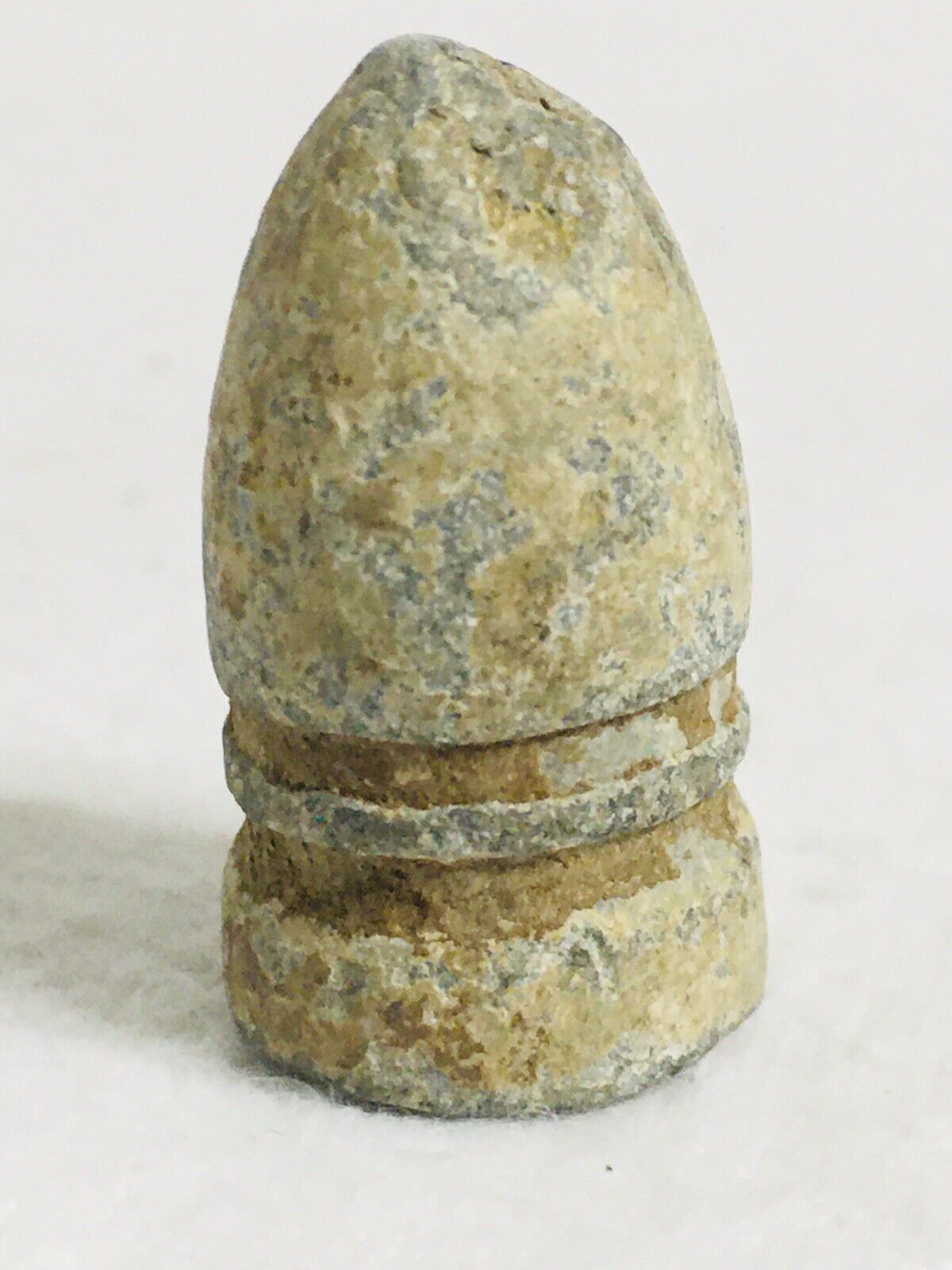-40%
The Battle of Piedmont VA Civil War Relic Nice Dropped .54 3-Ring Rifle Bullet
$ 15.83
- Description
- Size Guide
Description
We are working as partners in conjunction with Gettysburg Relics to offer some very nice American Civil War relics for sale. The owner of Gettysburg Relics was the proprietor of Artifact at 777 on Cemetery Hill in Gettysburg for a number of years, and we are now selling exclusively on eBay.THE BATTLE OF PIEDMONT, VIRGINIA - A RARE LOCATION - From The Wilbur C. Bedall Collection - A very nice Dropped .54 Caliber 3-Ring Bullet
.
This Dropped .54 Caliber 3-Ring Bullet, was a part of the collection
of Wilbur C. Bedall and was identified as having been recovered from the site of the Battle of Piedmont, Virginia.
Wilbur C. Bedall began collecting relics from his family farm in the Shenandoah Valley when he was just a young boy in the 1930s. In the 1980s he began using a metal detector to hunt for relics on various sites associated with the Civil War and was very careful to record the recovery location of all of his finds.
A provenance letter will be included.
The Battle Of Piedmont
Date - June 5, 1864
Location - Augusta County, Virginia
Result - Union victory
'Battle: After spending a rainy night encamped on the southern outskirts of Port Republic, Hunter's army marched southward on the Staunton Road toward Mount Meridian through the morning mist. Maj. Gen. Julius Stahel's cavalry led the advance, driving back Imboden's outposts. When Stahel's advance regiment reached Mount Meridian, Imboden successfully counterattacked with the 18th Virginia Cavalry. Stahel fed reinforcements into the fight and quickly overwhelmed the Virginians. Imboden barely escaped capture and only the timely charge from balance of his brigade, which included local reserves, saved the 18th Virginia from disaster. The Confederates then fell back slowly toward the village of Piedmont. Imboden expected to join forces with General Jones at Mowry's Hill but was surprised to find him at Piedmont. Jones and Imboden debated the situation, but in the end Jones rank won the argument.
Jones advanced a battalion of dismounted cavalry, convalescents and detailed men several hundred yards in front of his left wing, backed by a section of horse artillery, and Stahel's advance was stopped. Jones deployed his two brigades of infantry (his left wing) along the edge of a woodlot that ran from the Staunton (or East) Road to the high bluffs of the Middle River that anchored his left flank. He ordered Imboden to guard his extreme right flank with the cavalry. On Imboden's immediate left, Brig. Gen. John C. Vaughn's brigade of dismounted Tennessee and Georgia horsemen went into position. Vaughn's left flank rested six hundred yards to the rear of Jones' right wing, creating a gap in the center of his line. There he positioned two batteries, including Captain Marquis's reserve artillery manned by 17-18 year-olds of Augusta County.
Aftermath and Analysis: The Battle of Piedmont was fought June 5, 1864, in the village of Piedmont, Augusta County, Virginia. Union Maj. Gen. David Hunter engaged Confederates under Brig. Gen. William E. "Grumble" Jones north of Piedmont. After severe fighting, Jones was killed and the Confederates were routed. Hunter occupied Staunton on June 6 and soon began to advance on Lynchburg, destroying military stores and public property in his wake. Hunter, however, was foiled in his plan to destroy railroads, canals, and hospitals in Lynchburg when initial units under Jubal A. Early arrived. Hunter, short on supplies, retreated back through West Virginia. (See Civil War Battle of Piedmont, Virginia: A History.)
During the Civil War, Augusta County served as an important agricultural center as part of the "Breadbasket of the Confederacy." The Virginia Central Railroad ran through the county linking the Shenandoah Valley to the Confederate capital at Richmond. One of the bloodiest engagements ever fought in the Shenandoah Valley took place on June 5, 1864, at the Battle of Piedmont, a Union victory that allowed the Union Army to occupy Staunton and destroy many of the facilities that supported the Confederate war effort. Augusta County suffered again during General Philip H. Sheridan's "Burning", which destroyed many farms and killed virtually all of the farm animals.
Battle:
After spending a rainy night encamped on the southern outskirts of Port Republic, Hunter's army marched southward on the Staunton Road toward Mount Meridian through the morning mist. Maj. Gen. Julius Stahel's cavalry led the advance, driving back Imboden's outposts. When Stahel's advance regiment reached Mount Meridian, Imboden successfully counterattacked with the 18th Virginia Cavalry. Stahel fed reinforcements into the fight and quickly overwhelmed the Virginians. Imboden barely escaped capture and only the timely charge from balance of his brigade, which included local reserves, saved the 18th Virginia from disaster. The Confederates then fell back slowly toward the village of Piedmont. Imboden expected to join forces with General Jones at Mowry's Hill but was surprised to find him at Piedmont. The two commanders debated the situation, and then Jones (who ranked Imboden) decided to stand and fight.
Jones advanced a battalion of dismounted cavalry, convalescents, and detailed men several hundred yards in front of his left wing, backed by a section of horse artillery, and Stahel's advance was stopped. Jones deployed his two brigades of infantry (his left wing) along the edge of a woodlot that ran from the Staunton (or East) Road to the high bluffs of the Middle River that anchored his left flank. He ordered Imboden to guard his extreme right flank with the cavalry. On Imboden's immediate left, Brig. Gen. John C. Vaughn's brigade of dismounted Tennessee and Georgia horsemen went into position. Vaughn's left flank rested six hundred yards to the rear of Jones's right wing, creating a gap in the center of his line. There he positioned two batteries, including Captain Marquis's reserve artillery manned by 17- and 18-year-olds of Augusta County.
Hunter's Chief of Staff, Colonel David Hunter Strother, described the battlefield:
The enemy's position was strong and well chosen. It was on a conclave of wooded hills commanding an open valley between and open, gentle slopes in front. On our right in advance of the village of Piedmont was a line of log and rail defenses very advantageously located in the edge of a forest and just behind the rise of a smooth, open hill so that troops moving over this hill could be mowed down by musketry from the works at short range and to prevent artillery from being used against them. The left flank of this palisade rested on a steep and impracticable bluff sixty feet high and washed at its base by the Shenandoah [Middle River].
At noon, Hunter's infantry under the command of Brig. Gen. Jeremiah C. Sullivan advanced. Colonel Augustus Moor's brigade drove in Jones's advance line on the west side of the Staunton (East) Road, halting along the edge of a wooded lot opposite the one Jones's Confederates were stationed in. Sullivan ordered an advance but the well-protected rebel infantry repulsed the effort. On the east side of the road, Colonel Joseph Thoburn's brigade advanced through a wooded ravine toward Imboden's position under heavy artillery fire. Thoburn withdrew to support the Union artillery when he saw Moor's repulse. During these actions, the Union artillery under Captain Henry DuPont systematically silenced most of the Confederate guns. Only a few guns with Imboden on the extreme Confederate right remained active.
At this point, Jones decided to withdraw his left wing so that it was aligned with Vaughn and Imboden, but events soon changed his mind. Sullivan reinforced Moor with two regiments and ordered another attack, but was again repulsed. This time the Confederates counterattacked, but a stand by the 28th Ohio and some dismounted horsemen armed with Spencer repeating carbines, backed by a section of artillery, forced the Southerners to fall back to their breastworks. An emboldened Jones now rearranged his forces to launch a concerted attack against Moor's battered brigade. Jones ordered Vaughn to advance the greater part of his brigade to the left wing. The 60th Virginia Infantry moved from its position in the edge of the woods covering the large gap in the center of his battle line. The Virginians ended up in a second line of battle behind the main Confederate line, leaving the gap completely undefended.
Jones's concentration of troops against Moor's brigade did not go unnoticed. The Federals spotted the gap on the right flank of Jones's left wing, and Hunter ordered Thoburn's brigade to attack the vulnerable Confederate position. Thoburn quickly advanced to within a few yards of the Confederate left before his men were spotted, and shattered the Southern flank. At the same time, Moor's brigade joined the assault against the Confederate front. Jones attempted to retrieve the situation bringing up the Valley Reserves, who slowed Thoburn's advance but were unable to throw it back. Jones dashed up to a small group of rallying Confederates and then charged toward the oncoming Union infantry. A Union bullet struck him in the head, killing Jones instantly. The Union forces drove the Confederates toward the bluffs of the Middle River, splitting the Confederate force into two halves. At the bluffs, the converging forces of Thoburn's and Moor's brigade, backed by some of Stahel's Cavalry, captured nearly 1,000 unwounded Confederates. A section of Captain John McClanahan's Virginia horse artillery stood its ground near the village of Piedmont, slowing the Union drive southward and barely evading capture.
On the Staunton (East) Road, the 1st New York Veteran Cavalry launched a vigorous pursuit of the beaten Confederates. However, another section of McClanahan's battery and elements of Vaughn's brigade not sent to the left hastily deployed along the road between the villages of Piedmont and New Hope. When the New Yorkers chased up the road after the fleeing Southerners, this Confederate rear guard opened fire devastating the Union cavalry and dampening their enthusiasm for any further pursuit. Although at least 1,500 Confederates had been lost, the rear guard action at New Hope allowed the remnants of the army to escape further damage. Vaughn learned that he was now the senior officer as a result of Jones's death, but he was unfamiliar with the Shenandoah Valley and simply adopted Imboden's recommendations. Hunter's army rounded up the prisoners and tended to the wounded at Piedmont, where the Army of the Shenandoah camped for the night, having lost nearly 900 men killed and wounded. The next day, it became the first Union army to enter Staunton.
Medal of Honor recipients
Private Thomas Evans, 54th Pennsylvania Infantry, shot a Confederate officer rallying the Confederates, battled the color bearer of the 45th Virginia, and captured the flag from him.
Musician James Snedden, 54th Pennsylvania Infantry, picked up a rifle and joined the attack, captured Colonel Beuhring Jones, commander of the 1st Confederate infantry brigade.
Maj. Gen. Julius Stahel was struck by two bullets as he led his dismounted cavalry into the fight, had the wounds dressed at a field hospital, and returned to direct the final cavalry charge.'
We include as much documentation with the relics as we possess. This includes copies of tags if there are original identification tags or maps, as well as a signed letter of provenance with the specific recovery information.
All of the collections that we are offering for sale are guaranteed to be authentic, and are either older recoveries, found before the 1960s when it was still legal to metal detect battlefields, or were recovered on private property with permission. Some land on Battlefields that is now Federally owned, or owned by the Trust, was acquired after the items were recovered. We will not sell any items that were recovered illegally, nor will we sell any items that we suspect were recovered illegally.
Thank you for viewing!











